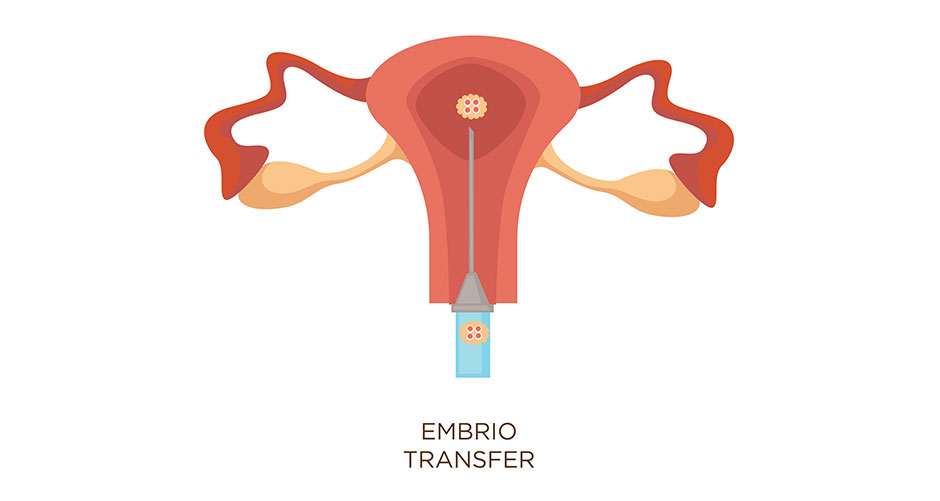Embryo transfer
Embryo transfer is the next step in the IVF or ART (Assisted Reproductive Technology) process. Generally, embryo transfer is done 48 hours after the egg has been fertilised by the sperm. At this point, cell division is already occurring and there will be a minimum of four cells visible within the embryo when it is examined under the microscope.
The procedure
After so much build up and so many complex procedures to get to this point, embryo transfer can almost seem like it is too simplistic. For the majority of women though, transferring the embryo is straightforward and painless. It is done when the woman is conscious, so no anaesthetic is required. A vaginal speculum is used to open the walls of the vagina so the cervix can be clearly seen. A fine plastic catheter is then fed up through the vagina and through the middle of the cervix into the uterus. Some doctors will use ultrasound to help them guide the end of the catheter to the ideal location in the uterus before the embryo is injected.
It can be difficult to pass the catheter through the cervix if it is scarred or if the woman has had previous surgery which has caused her cervical opening to become restricted. A dilatation is sometimes necessary before the embryo transfer stage. This then allows the catheter to be pushed gently through the cervix.
How many are transferred?
Most clinics will now only transfer two embryos. This increases the chances of a successful pregnancy but limits the risk of triplets and multiples. In previous years, there was little regulation around the numbers of embryos which could be transferred. Now there are generally more responsible practices being conducted in fertility clinics.
The other issue is that the likelihood of successful pregnancies from fertility treatments overall has increased.
Transfer options
Generally, there are two options for embryo transfer; either a natural cycle or programmed frozen embryo transfer. For women who are ovulating normally, the embryo transfer is timed to take place 2-3 days after they have ovulated, depending on how old the embryos were and when they were frozen.
With a programmed frozen embryo transfer, natural ovulation is suppressed through taking oestrogen. This has the added benefit of thickening the uterine lining in preparation for an embryo to implant. Progesterone pessaries or gel are also used to help to build up the uterine lining. It is common for women to use these for around 2 weeks before the transfer procedure. Around 4-5 days after using the progesterone pessaries, the embryo transfer is done.
Freezing embryos
The process of freezing embryos for later use is not just a matter of putting them in a deep freeze and hoping for the best. First, they are dehydrated so that the risk of damage from ice crystals forming is minimised. Then, the embryos are cooled to minus 140 degrees and stored in liquid nitrogen until they are needed. Thawing takes around 1-2 hours. It is important that the embryos are frozen at a precise time in their development. This is commonly when they are at a four or eight cell stage of cell division. This is because they have become a little more stable by this stage and there is less chance of them being damaged during the freezing and thawing stages.
Hold on tight!
You could be forgiven for imagining the uterus is like a big empty space where the embryo rattles around until it finds somewhere soft to nestle in. But those pictures of a pear-shaped “hollow” space aren’t entirely accurate. The back and front walls of the uterus actually meet when there is not a baby forcing them apart. This means that the tiny embryo is actually well-surrounded by soft nourishing tissue and blood. When the embryo is transferred on day 2 of its development, it will continue to divide for a couple more days before it will implant.
Try not to change your normal daily activities after you have had an embryo transfer. The temptation can be strong to just rest up and take it very easy. But remember that in normally conceived pregnancies, women aren’t even aware they are pregnant at this stage and just go about their lives as per normal.












